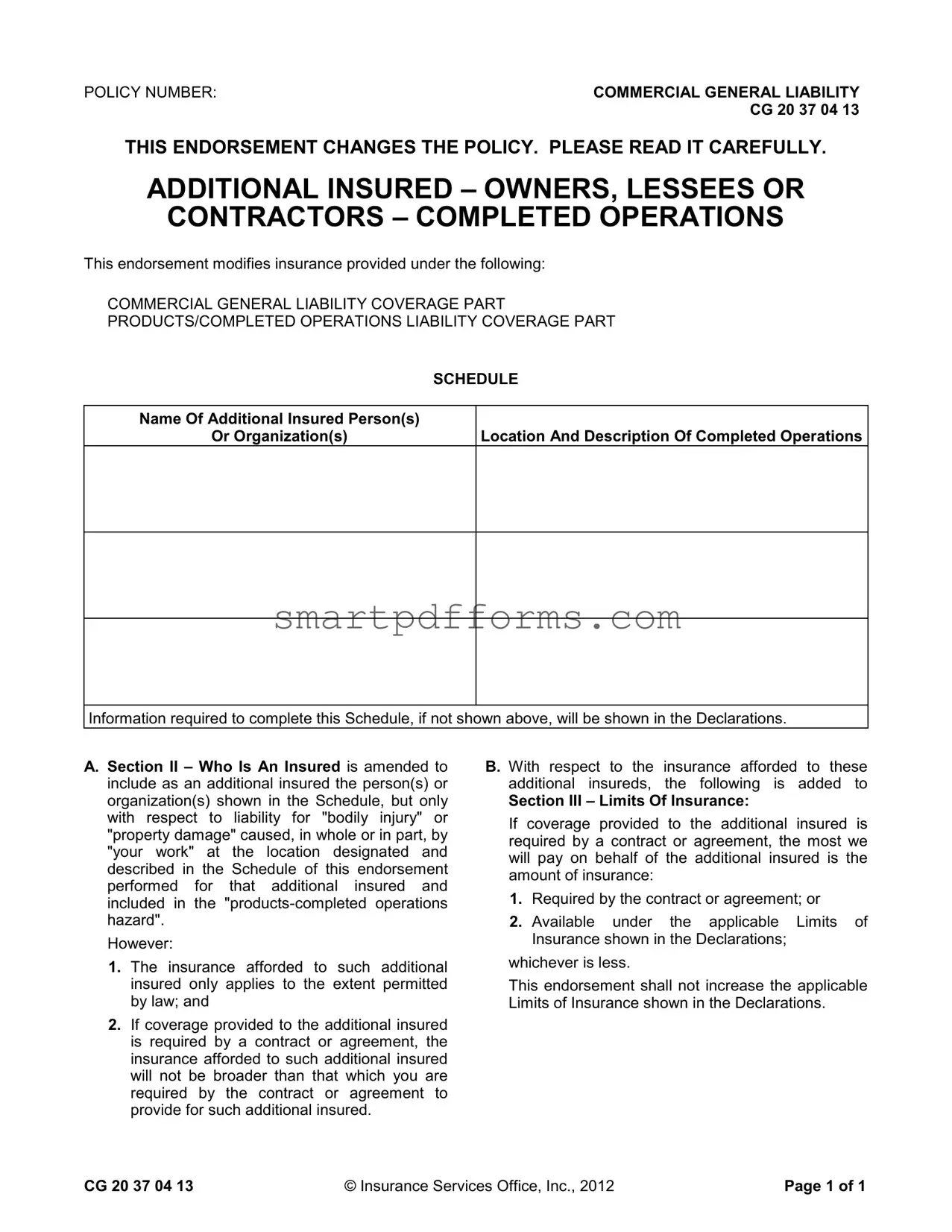Blank Additional Insured PDF Template
The Additional Insured form, specifically the COMMERCIAL GENERAL LIABILITY CG 20 37 04 13, is a crucial document that alters the coverage provided by an insurance policy. It extends insurance protection to include additional individuals or entities as insured parties, particularly in relation to liability for bodily injury or property damage resulting from completed operations specified in the schedule of the endorsement. This extension of coverage, however, is subject to legal limitations and the specifics of any relevant contracts or agreements. Click the button below to start filling out your Additional Insured form.
Make This Document Now

